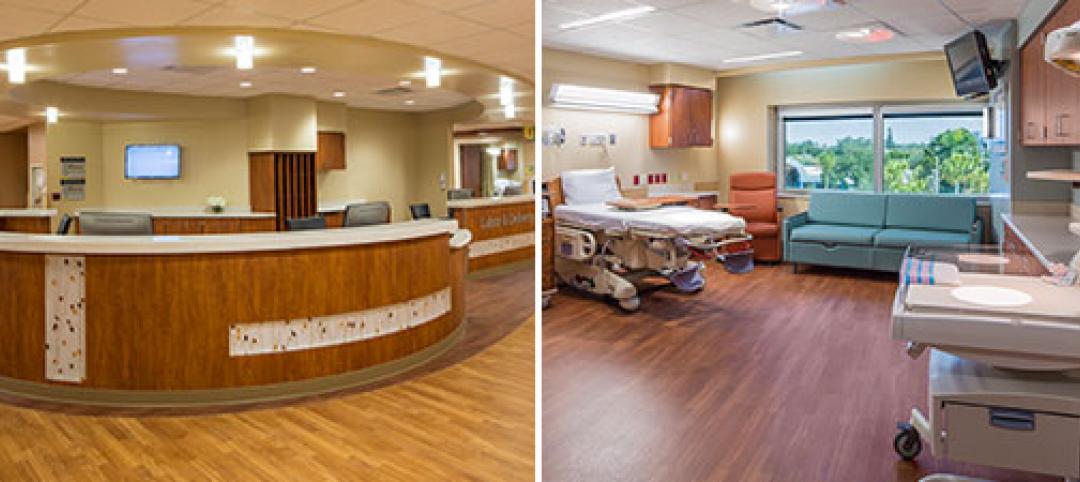When evidence-based design collides with conventional wisdom, the outcome will sometimes be disruptive.
Take, for example, the generally accepted advantages in patient care and observation related to decentralizing nurses’ stations in hospitals, which is becoming standard practice for healthcare clients and their AEC partners.
A recent evaluation of a renovated Missouri hospital, conducted by University of Kansas faculty members, raised questions about the impact of decentralization on patient satisfaction and the communication among nursing teams within the facility.
The St. Louis-based architectural firm Lawrence Group retained the Institute for Health + Wellness Design (IHWD) at KU’s School of Architecture, Design, and Planning to provide a third-party review of the firm’s 2014 remodeling of the orthopedic unit at SSM St. Mary’s Hospital in Jefferson City. That healthcare system was about to embark on an expansion of its St. Joseph Hospital West in Lake St. Louis.
Lawrence Group is an affiliate member of IHWD.
The Institute assessed the unit using an evidence-based design checklist developed by the nonprofit Center for Health Design in California. Its survey included a “space syntax” evaluation that generated a heat map, which showed how the unit’s layout might affect patient satisfaction.
“We wanted to see does moving into a new facility improve patient satisfaction scores, which is one of the most important things for hospital owners today,” said Hui Cai, Assistant Professor at KU, who with Professor Kent Spreckelmeyer and Frank Zilm, IHWD’s chairman, presented findings from the Institute’s nursing unit study at the Healthcare Design Conference 2016 in Houston last November.
The study found, perhaps not surprisingly, that the facility itself showed “statistically significant increase[s]” in scores after the renovation. But patient-quality scores mostly stayed the same, and one score—nurses’ responses to patient calls—actually dropped slightly.
The Institute hypothesizes that decentralization was the culprit, due to the physical distance and visual disconnection of decentralized nursing unit design, which necessitates that nurses must move farther to get from station to station. The Institute suggests these distances might be an impediment to interaction among nurses that might also delay responses to patients.
“This design trend needs to be further investigated before it is accepted as standard for every hospital,” said Cai. “We have to see how to modify the design to achieve balance between shorter walking distance, better patient surveillance and better staff communication and collaboration.”
This is one of the first research studies to link decentralized nurse station design with organizational performance and patient outcomes. The Institute has conducted a second phase of study to evaluate further the degree to which decentralized design affects nurses’ teamwork and patients’ perception of care. In late 2017, IHWD plans to present and publish the results of this study, which included a second hospital, the University Medical Center of Princeton at Plainsboro, N.J.
Related Stories
| Oct 8, 2014
Massive ‘healthcare village’ in Nevada touted as world’s largest healthcare project
The $1.2 billion Union Village project is expected to create 12,000 permanent jobs when completed by 2024.
| Oct 3, 2014
Designing for women's health: Helping patients survive and thrive
In their quest for total wellness, women today are more savvy healthcare consumers than ever before. They expect personalized, top-notch clinical care with seamless coordination at a reasonable cost, and in a convenient location. Is that too much to ask?
| Sep 29, 2014
10 common deficiencies in aging healthcare facilities
VOA's Douglas King pinpoints the top issues that arise during healthcare facilities assessments, including missing fire/smoke dampers, out-of-place fire alarms, and poorly constructed doorways.
| Sep 25, 2014
Look to history warily when gauging where the construction industry may be headed
Precedents and patterns may not tell you all that much about future spending or demand.
| Sep 24, 2014
Architecture billings see continued strength, led by institutional sector
On the heels of recording its strongest pace of growth since 2007, there continues to be an increasing level of demand for design services signaled in the latest Architecture Billings Index.
| Sep 23, 2014
Cedars-Sinai looks to streamline trauma care with first-of-its-kind OR360 simulation space
The breakthrough simulation center features moveable walls and a modular ceiling grid that allow doctors and military personnel to easily reconfigure the shape and size of the space.
| Sep 22, 2014
4 keys to effective post-occupancy evaluations
Perkins+Will's Janice Barnes covers the four steps that designers should take to create POEs that provide design direction and measure design effectiveness.
| Sep 22, 2014
Sound selections: 12 great choices for ceilings and acoustical walls
From metal mesh panels to concealed-suspension ceilings, here's our roundup of the latest acoustical ceiling and wall products.
| Sep 20, 2014
Healthcare conversion projects: 5 hard-earned lessons from our experts
Repurposing existing retail and office space is becoming an increasingly popular strategy for hospital systems to expand their reach from the mother ship. Our experts show how to avoid the common mistakes that can sabotage outpatient adaptive-reuse projects.
| Sep 19, 2014
8 hot healthcare projects win interior design awards
Winners of IIDA's 2014 Healthcare Interior Design Competition include Perkins+Will, AECOM, Buffalo Design, and SmithGroupJJR, for projects from Cincinnati to Toronto.
















